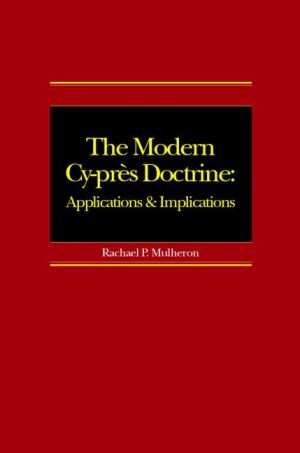We are now closed for the Christmas and New Year period, returning on Monday 5th January 2026. Orders placed during this time will be processed upon our return on 5th January.

It is unusual, in the precise world of law, to find instances of where ‘near enough is good enough’. This book explores when this is possible, referring to property and monetary transfers, under the increasingly important and influential ‘cy-près doctrine’.
The doctrine decrees that, when literal compliance is impossible or infeasible, the intention of a donor or testator should be carried out ‘as nearly as possible’. Over the past thirty years, this doctrine has marched into other legal territory where ‘as near as possible’ is also considered sufficient, such as in class actions litigation and under non-charitable trusts.
Discussing and analyzing key developments across the Commonwealth jurisdictions and the USA, this book considers whether there is a new and overarching definition which can be attributed to the cy-près doctrine. It asks whether there is a doctrinal symmetry of analysis that truly renders it a body of ‘cy-près law’ in the modern context and whether the doctrine can be expected to play an even greater role in the future.